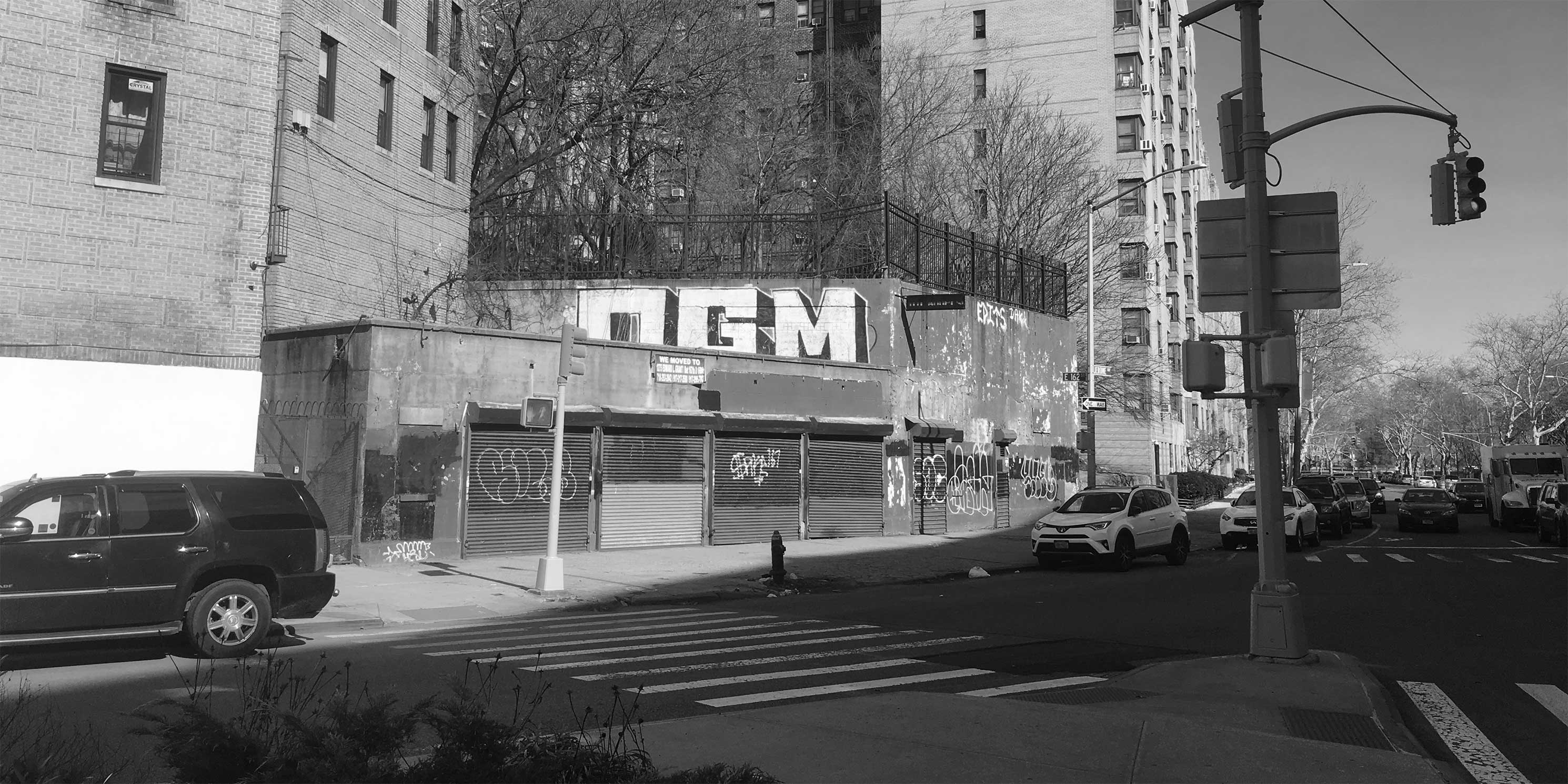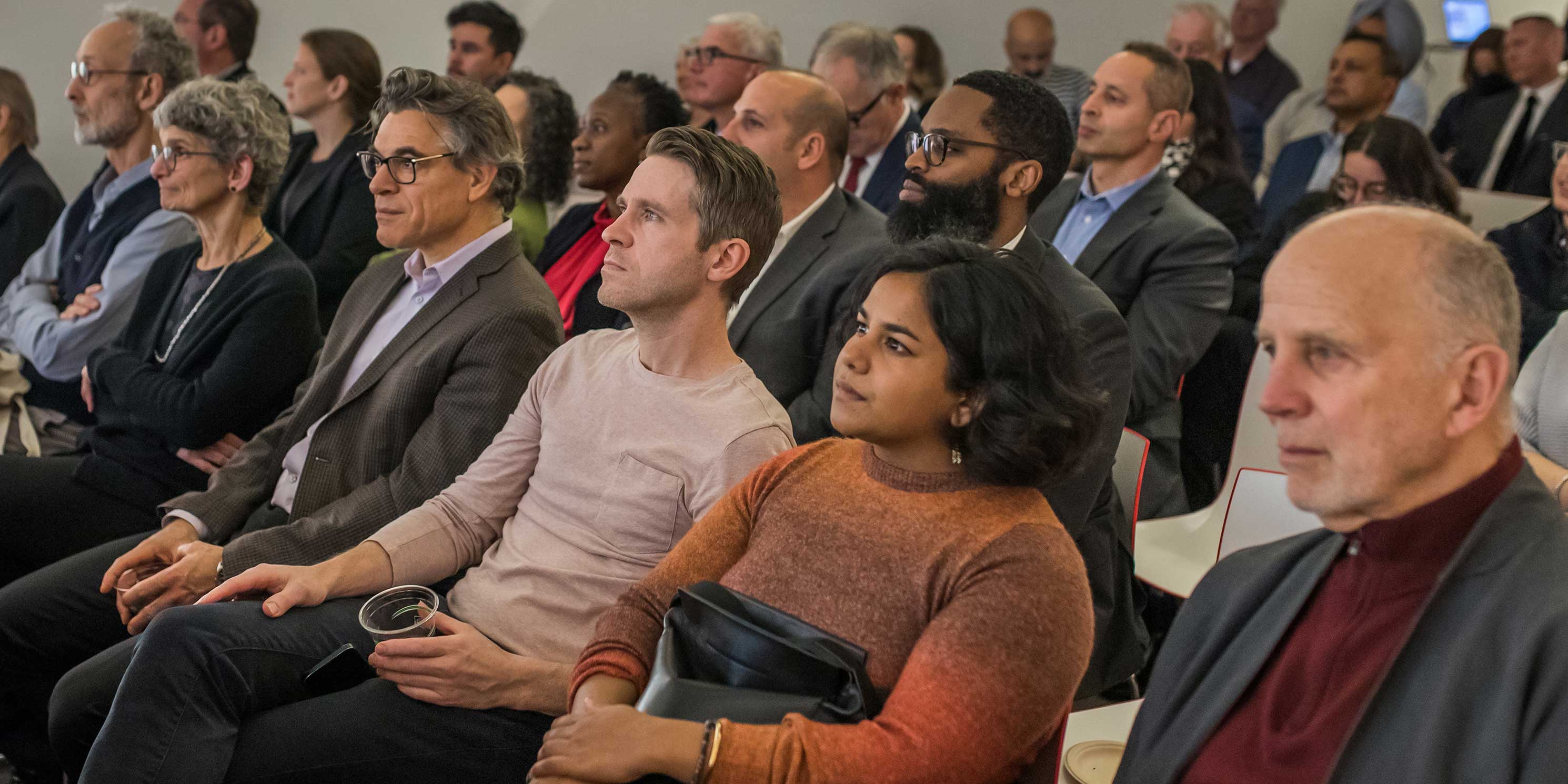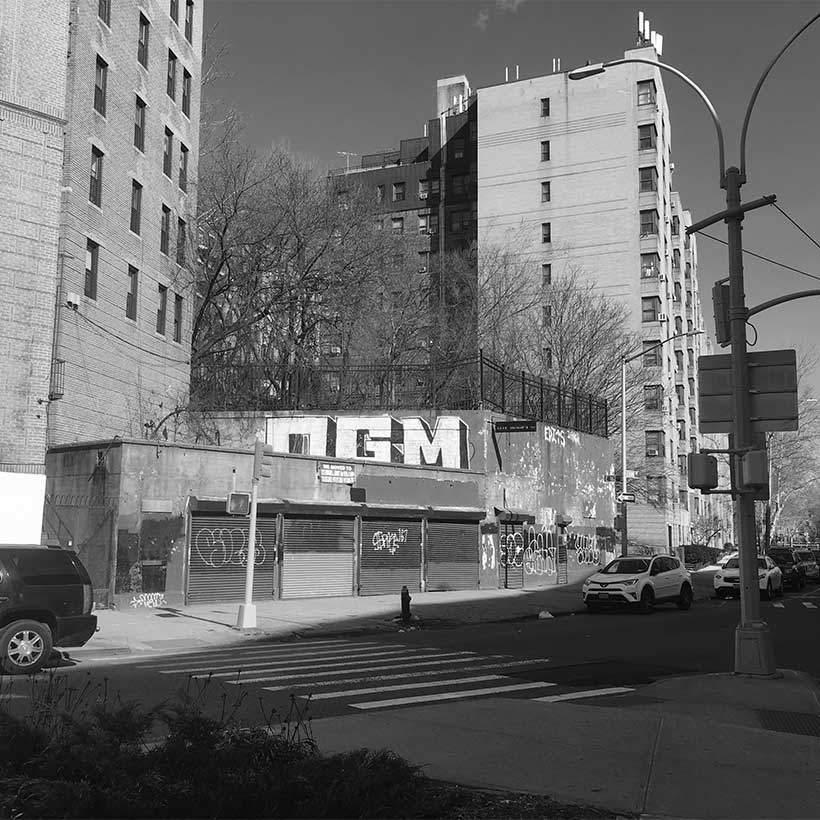Jerome Avenue Rezoning Threatens Neighborhood Character
MAS Testimony to the New York City Council
Position
The Municipal Art Society of New York (MAS) believes that without further investment and protection, the Jerome Avenue rezoning proposal has the potential to irreparably affect the character of the neighborhood. Simply put, the City is not doing enough to mitigate the documented negative impacts of increased development in the Jerome Avenue area.
Despite the City’s community outreach efforts with the Jerome Avenue Neighborhood Plan, we find a disconnect between the Plan’s goals and the strategies identified in the rezoning proposal to achieve them. Therefore, we remain acutely concerned about housing affordability, residential and commercial displacement (especially automotive-related businesses and workers), and the impacts the influx of new residents and workers would have on neighborhood schools, daycare facilities, and public open space.
Download Testimony
Background
The New York City Department of City Planning’s (DCP) rezoning proposal, which involves zoning map amendments, zoning text amendments, and city map changes, would affect an approximately 92-block area primarily along Jerome Avenue and the adjoining eastern and western commercial corridors in Bronx Community Districts 4, 5, and 7. The rezoning is expected to result in a net increase of 3,228 dwelling units (DUs), 72,273 square feet (sf) of community facility space, and 20,866 sf of commercial/retail space to the project area, while decreasing industrial and automobile-related space by 47,795 sf and 98,002 sf, respectively. The proposal is anticipated to add nearly 9,500 new residents to the neighborhood.
Indirect Residential Displacement
With almost 36 percent of households at or below poverty level, this neighborhood is one of the city’s lowest income communities. Thus, the availability of affordable housing is one of the most pressing concerns for local residents. The City asserts that indirect residential displacement resulting from the rezoning would be mitigated by the implementation of the Mandatory Inclusionary Housing (MIH) program. However, as we have seen with other citywide rezonings, the City has yet to disclose the total number of affordable units expected, the income requirement breakdowns, or evaluated alternative scenarios showing different MIH affordable housing options available.
In light of these issues, MAS finds the FEIS socioeconomic conditions analysis incomplete and deficient. To conduct a rigorous analysis, the City must identify the number of affordable units expected, evaluate multiple MIH options, and disclose the projected source of financing for each affordable development. As is the case with other citywide rezonings in low income areas, the failure to disclose the number of proposed affordable dwelling units calls the socioeconomic conditions analysis into question, especially since the project Environmental Assessment Statement stated that the number of low- to moderate-income units were “To be described in [the] EIS.” Without the evaluation of a detailed housing plan, MAS questions the validity of a determination concluding that displacement impacts will be mitigated effectively.
Median Household Income and Mandatory Inclusionary Housing – The median household income in the Jerome Avenue neighborhood is $26,226. Twenty percent of area households earn less than $10,000 annually. Therefore, apartments would need to rent for $650 or less in order to be considered affordable for the 50 percent of residents making less than the median income.
The “deep affordability” option under MIH requires that 20 percent of units be affordable to households making an average of 40 percent of Area Median Income (AMI), which is $34,360 for a household of three. Even at this level of affordability, housing would be considerably out of reach for the majority of area residents. While the current Department of Housing Preservation & Development (HPD) term sheets address some of the need for deeper affordability in the immediate future, we are concerned about the long-term affordability in the absence of these subsidies. As we have seen with other rezonings in low-income communities across the city, the current MIH affordability options fail to adequately serve the residents in the Jerome Avenue project area.
MAS recommends that the rezoning mandates at least 20 percent of the affordable dwelling units should be at or below 30 percent of AMI in order to fill this gap and more accurately reflect the median income of the neighborhood.
Rent-Stabilized and Rent-Regulated Units – It is clear that rent-stabilized and rent-regulated units contribute greatly to housing affordability. According to the HPD, two-thirds of all households in the Jerome Avenue area are rent-regulated. Forty-one percent are rent-stabilized and 21 percent receive some type of government assistance. In the rezoning project area, there are 78 multifamily residential buildings registered with the New York State Department of Housing and Community Renewal (DHCR) containing 4,250 units that may be rent-regulated. Within a quarter-mile, there are more than 700 multifamily buildings registered with DHCR containing approximately 37,000 units. We find the preservation of these units to be critical for the stability of lower-income households in the area.
More than a quarter of rent-stabilized tenants in zip codes 10452 and 10453 currently have preferential rents indicating that they have an increased risk of being displaced due to rising rents. To combat tenant harassment in the neighborhood, MAS supports the pilot program in which property owners would be required to obtain a certification of no harassment before receiving permission to redevelop. This will help strengthen the preservation of affordable units and prevent harassment of tenants by those seeking to redevelop their properties in order to garner higher rents.
While MAS commends the City’s housing preservation efforts in the Jerome Avenue corridor to date, we strongly encourage continued and ongoing investment in housing preservation as a necessary insurance against residential displacement and the protection of long-term affordability.
Commercial Displacement
According to the FEIS, approximately 77 firms employing 584 employees would potentially be displaced under the rezoning. Despite this, the FEIS concludes that the rezoning would not have adverse impacts on local businesses. The FEIS also concludes that any potential for commercial displacement would be offset by the introduction of a substantial new residential and worker population that would in fact sustain the customer base of existing businesses.
MAS finds these conclusions to be unfounded at best. With the addition of 3,228 DUs under the rezoning, it is expected that a customer base with substantially higher incomes and retail preferences than current residents would be introduced to the area. Furthermore, at the deepest affordability scenario under MIH, only 20 percent of eligible households would be earning $31,080–nearly $6,000 more than the current area median.
Therefore, the mere introduction of a moderate amount of affordable DUs at higher AMI bands could bring a dramatic shift in area socioeconomic conditions toward a higher income bracket with different retail preferences, not to mention the market-rate tenants. As a result, the rezoning may have a harmful effect on many neighborhood businesses that cater to the existing population.
Specific Effects on Auto-Related Businesses
A disproportionate number of the businesses facing potential displacement are in automotive-related industry sectors. Meanwhile, the FEIS asserts that there would not be a significant impact on any specific industries even though 160 workers, or 28 percent of all potentially displaced workers, are currently employed in automotive related industries.
According to Under the Hood, a report prepared by The Pratt Center for Community Development, these businesses occupy sites with the lowest value per square foot ($50) in the rezoning area, making them prime for redevelopment. The displacement of these businesses and jobs presents a substantial impact to the automotive industry, which is composed of an interdependent ecosystem of firms including automotive repair, wholesale parts sellers, and other related businesses.
In an area with a 17 percent unemployment rate–60 percent more than the city average, it is clear that the Jerome Avenue community can ill-afford to lose any jobs. While the typical food preparation or retail worker earns $20,000 per year in New York City, autoworkers earn $44,000 on average. These comparatively high paying jobs also have relatively low barriers to access, as “75 percent of auto repair workers are people of color, 64 percent are foreign-born, and 68 percent have a high school diploma or less.” 1
In addition to local business and employment impacts, it is likely that at least 50 percent of workers in these automotive-related businesses live in the Bronx. Therefore, further damage to the area’s community and economy can be expected if jobs are lost in this sector. 2
The FEIS states that displaced auto-related businesses could relocate to other clusters throughout the city. However, relocation for these types of business is difficult, as they require the availability of C8 commercial and manufacturing zoning, which has been reduced because of other recent city rezonings (e.g., the Atlantic Avenue corridor in Brooklyn and Willets Point, Queens). In addition, previous plans for the relocation of automotive businesses and workers in Willets Point, Queens have largely been unsuccessful.
MAS believes the preservation of existing automotive-related businesses and jobs is of paramount importance. We urge the City to continue exploring the expansion of C8 preservation zones, and examine other solutions such as Councilmember Vanessa Gibson’s Commercial and Auto Repair Stability Act (CARS) legislation that would provide resources and protections for automotive businesses.
Community Facilities
Public Schools – The introduction of 9,573 new residents will substantially increase the demand on area community facilities. One of the primary concerns is overcrowded elementary and intermediate public schools. While all public schools within the rezoning area are expected to see an increase in utilization rates, several of the already over-capacity schools in Community School Districts 9 and 10 will see utilization rates rise dramatically.
We recognize the City’s commitment to build the P.S. 133 Annex as a step toward addressing capacity issues with elementary schools in Community School District 10. However, no commitments to build additional schools in Community School District 9 have been discussed. We find this unacceptable given that the intermediate schools in District 9, sub-district 2 will reach over 170 percent of their capacity under the rezoning. In total, the rezoning is expected to result in a deficit of several thousand public school seats. This must be addressed with appropriate mitigating measures before the zoning proposal is approved.
Unfortunately, the mitigation measures identified in the FEIS fall demonstrably short of addressing school capacity in the project area. Reorganizing existing public school space and creating additional space through new construction are presented as options, without disclosing details on how these measures would be implemented. Despite DCP having engaged in community outreach through the Jerome Avenue Neighborhood Plan with regard to present and future school capacity needs, the mitigation measures in the FEIS do not reflect community input or identify any firm commitments by the City.
Furthermore, the School Construction Authority recently released new data for 2016-2017 school enrollment, capacity and utilization. However, as stated in the FEIS, “the analysis does not reflect the new data.” Given the overburdened schools in the area, we find it unacceptable that the evaluation of impacts on area schools does not include the most recent critical baseline data. In light of this glaring deficiency, we urge the City to revise the FEIS community facilities evaluation using the most up-to-date school data.
Child Care Services – The rezoning would result in a shortfall of 92 spots in publicly funded childcare facilities in the area. Unfortunately, this is not identified as an adverse impact in the FEIS because it does not exceed the applicable CEQR thresholds. MAS finds that in the Jerome Avenue community, any deficit in childcare facilities must be considered an adverse impact that requires mitigation. Therefore, we urge DCP to identify and commit to additional mitigation measures for the anticipated impacts on childcare services in the area including, but not limited to, adding more daycare facilities under the rezoning proposal.
Open Space
The Jerome Avenue community is greatly underserved by open space. With a net addition of 9,459 residents and 974 workers under the rezoning, demand on the limited open space will increase substantially. According to the FEIS, the neighborhood would achieve a paltry 21 percent of the City’s goal of 2.5 acres of open space per 1,000 residents, a 6 percent decrease from current conditions. However, the FEIS manages to conclude that no significant adverse impacts on open space would occur because the conditions do not exceed CEQR thresholds requiring additional analysis or mitigation.
MAS asserts that the City must pursue ways to improve existing and create new open space to accommodate the demands of the current and future population of the project area.
Shadows
Development facilitated by the rezoning is expected to result in significant shadows on eight open space resources–the Bronx School of Young Leaders, the PS 306 Schoolyard, the Mount Hope Playground, the Goble Playground, Inwood Park, and Keltch Park. The shadow analysis also identifies two additional smaller sites that would experience a complete loss of sunlight during the growing season (the Edward L. Grant Greenstreet and the Jerome Avenue/Grant Avenue Greenstreet).
Despite these impacts and the lack of open space in the area, no clear shadow mitigation measures have been proposed. Therefore, MAS urges the City to examine building design changes for future development that eliminate or greatly reduce shadow impacts on these valuable resources and commit to the creation of new open space in the area.
Historic and Cultural Resources
The proposed rezoning area contains several cultural and historic resources that could be affected by development under the rezoning. According to the FEIS, the rezoning has the potential to result in construction impacts on the State/National Register of Historic Places (S/NR)-listed Croton Aqueduct System and associated park.
In addition, several projected and potential development sites are within 90 feet of the S/NR-eligible U.S. Post Office–Morris Heights Station. Therefore, we request that all correspondence between the City, the State Historic Preservation Office (SHPO), and the Landmarks Preservation Commission (LPC) must be made publicly available on the City’s website.
Traffic and Transportation
According to the FEIS, significant adverse traffic impacts would occur at 22 intersections in the rezoning area during one or more analyzed peak hours. Of these, eight that are concentrated along Jerome Avenue, River Avenue, and Grand Concourse, would remain unmitigated. In other words, long-term traffic problems will occur at these intersections, and no remedy will be proposed to address them. For the remaining intersections, suggested mitigation measures include modifying traffic signal phasing/timing, and eliminating on-street parking within 100 feet of the affected intersections.
We find these measures to be customary boilerplate approaches. The FEIS does not include, as MAS insisted in prior comments, a detailed explanation of how and when these approaches would be implemented and tested for effectiveness, and disclosure of the DOT approval process for these mitigation strategies. We remain steadfast in expecting the City to provide this information.
Finally, at present, none of the elevated subway stations on the 4 line in the study area are compliant with the Americans with Disabilities Act (ADA). As infrastructure and streetscape improvements are made in the area, the creation of ADA accessible entrances and exits at these stations should be considered a top priority.
Conclusion
The Jerome Avenue rezoning proposal comes at a critical time for the community and the city as a whole. With almost 10,000 new residents expected in the area, protections must be put in place to ensure that current residents and businesses are not displaced.
While MAS supports the efforts the City has made to engage the community under the Jerome Avenue Neighborhood Plan, the rezoning does not adequately resolve critical issues the community will face with regard to residential and commercial displacement, access to and availability of affordable housing, overburdened schools and daycare centers, open space, and traffic.
MAS strongly urges the City to adopt our recommendations into the rezoning proposal to assure that new residents and businesses will be integrated without forever altering the character of the existing Jerome Avenue community.
Thank you for the opportunity to provide comments on this critically important proposal.
Notes
- Abello, Oscar. Help for NYC Auto Repair Shops Could Save Thousands of Jobs. March 21, 2017.
- 2014 LEHD Origin-Destination Employment Data.




